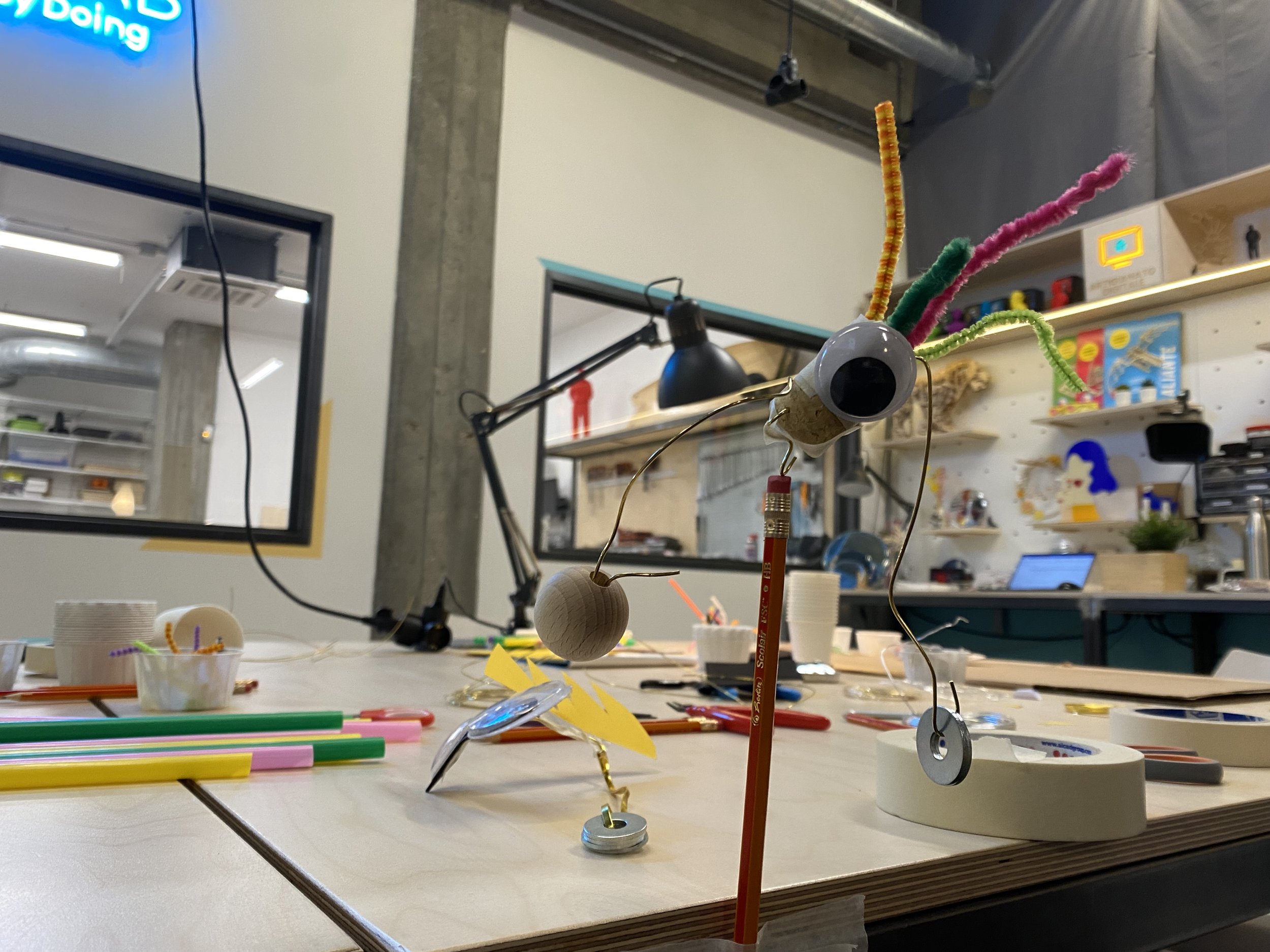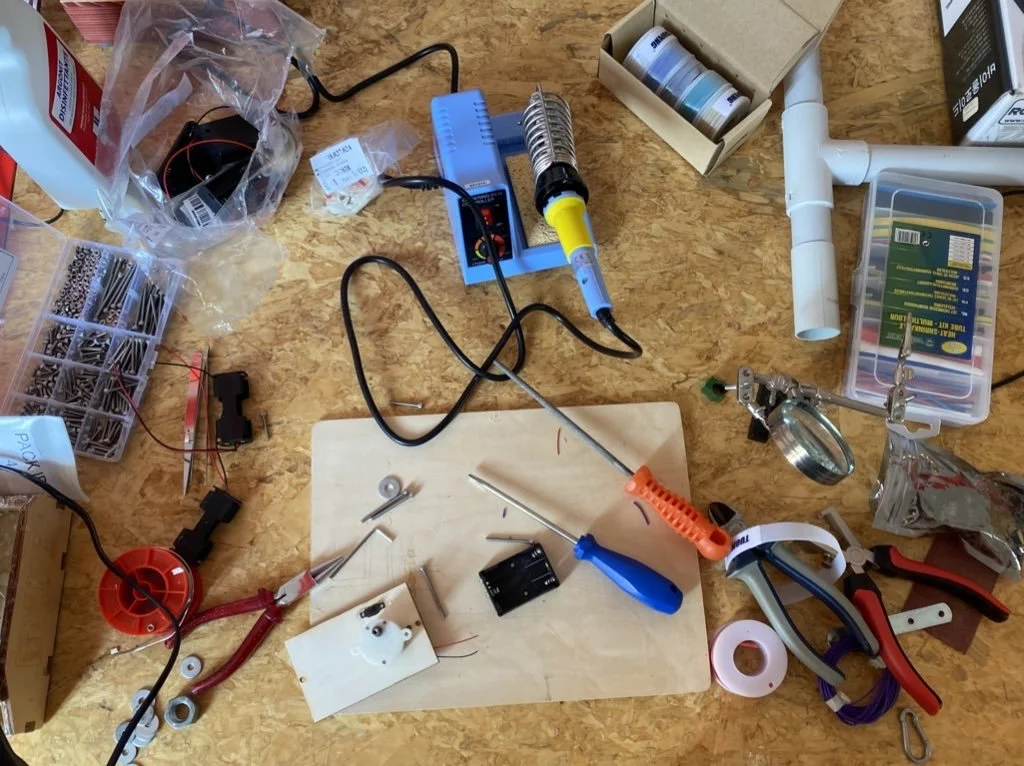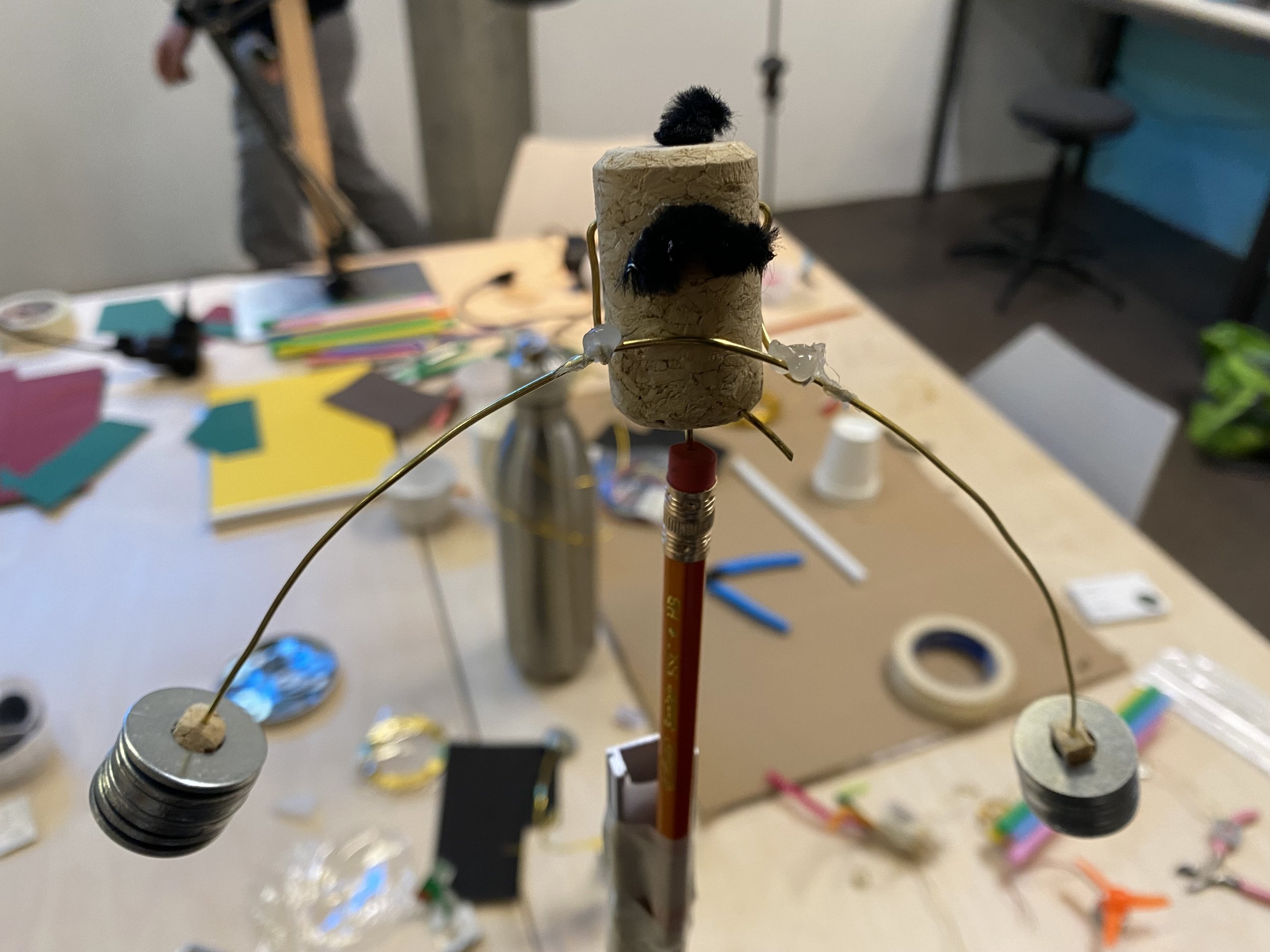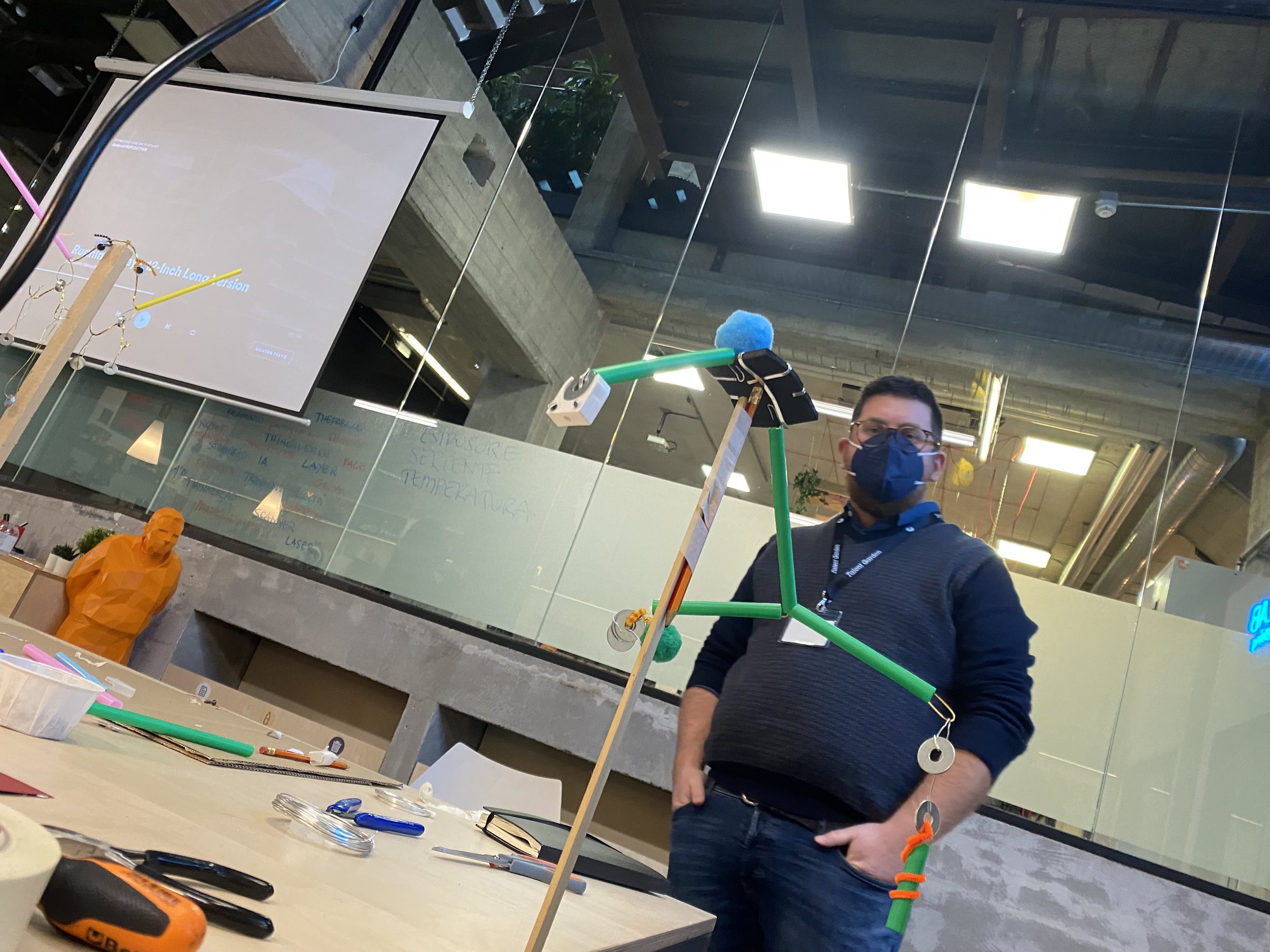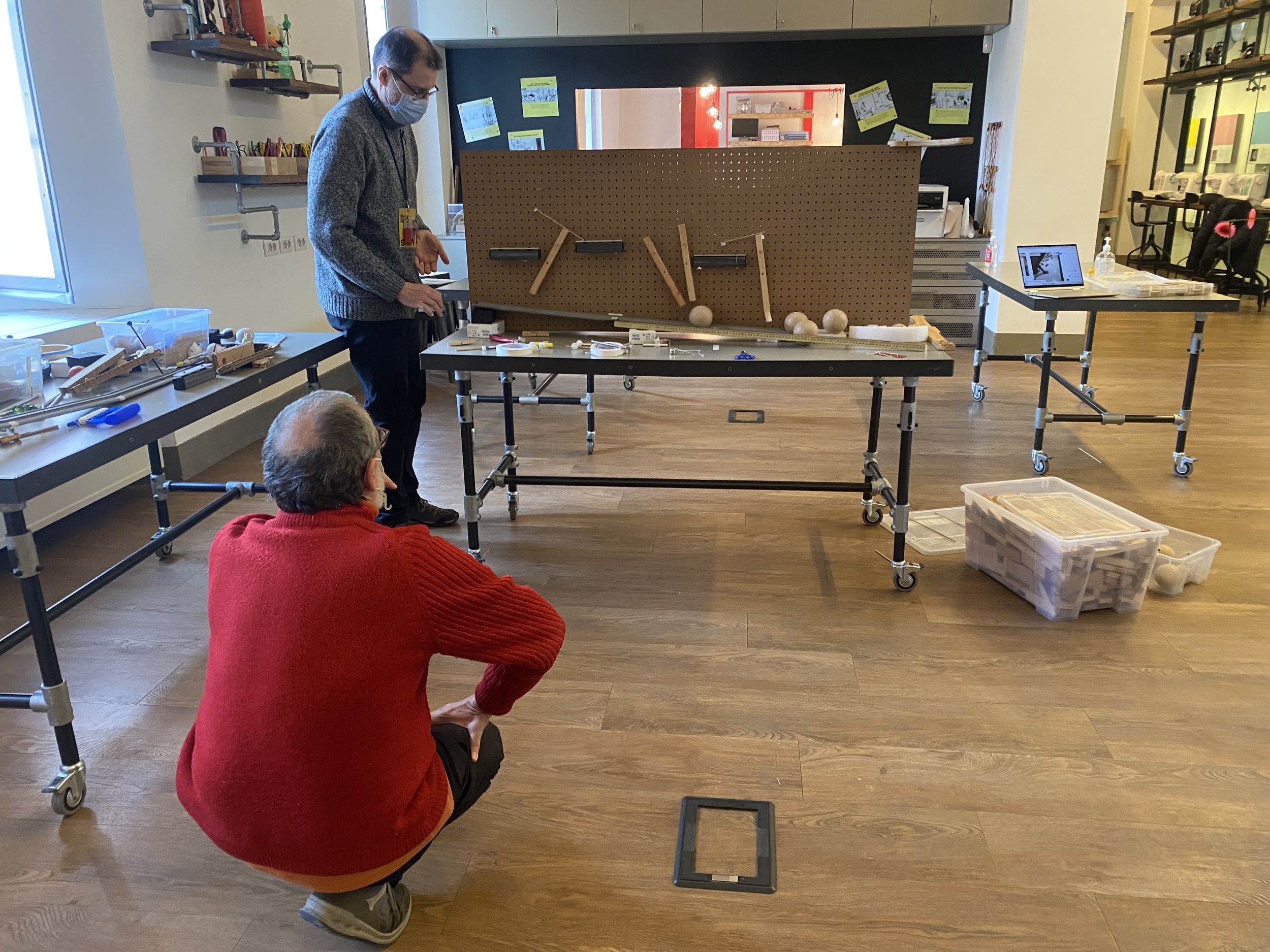Prototyping Balance and Sound Automata in Milan
Over the past two weeks, I was in one of my favorite cities in the world, Milan, spending time at TheFabLab and the Museo Scienza Leonardo Da Vinci. We were trying out some new ideas for the current project with the Tinkering Studio at the Exploratorium to develop unfacilitated tinkering experiences. It was a great two weeks that helped to generate a lot of new ideas for the ‘uftes’ that are currently in development.
For the first week I was a maker-in-residence at the FabLab run by Massimo Temporelli located in the Talent Garden coworking building. They set me up with a corner of their colorful and engaging makerspace which was full of tools and materials.
I started where Claus Schneidereit and I left off with the balance prototypes before the holiday break. I wanted to turn the motorized offset weight into a more sturdy and robust piece. Luckily I could use the laser cutter in the FabLab which helped me to rapidly iterate on a new design.
As well during the time at the FabLab I led a short workshop to prototype balance on a small scale. One thing that I tried with the prompt that could be interesting for the larger scale element was asking the group to build characters or creatures.
The second week of the visit to Milan, I returned to the Museo Scienza Leonardo Da Vinci Tinkering Zone that I helped to launch with the TS team about ten years ago. They have a great lab for visitors to try out projects as well as a full makerspace for staff and visiting artists to play and create.
Along with Stefano Burratti and Fabrizio Stavola, we continued working on balancing sculptures, building parts that could make the system more similar to mobiles.
We also tried out starting from a hanging garden stake as the first piece for a balance exploration. When we test out this experience at the Exploratorium next month, I’d like to try both styles of building.
As well during the time in Milan, I worked a bit on a second tinkering experience of sound mechanisms. We had the idea to combine our automata/linkage experiments with sound makers that get linked together either with a series of cams or powered by a rolling ball.
We are inspired by the work of Japanese artist Kazu Harada for the rolling ball sculptures and also got some ideas from Stephen Guy of Cabaret Mechanical Theater who created a ensemble kit to link a bunch of elements together.
At the FabLab we set up a remote prototyping session at the FabLab with colleagues in San Francisco and Germany to experiment with first ideas and physical prototypes. We worked on ramps with spinning wheels, an inclined plane with hanging elements and a cam powered programmable sequencer in the style of an exhibit called mighty rhythm king.
It was really fun to try things out and also discuss the qualities of the experience that are important for us. We wanted to make sure that in the project learners could really adapt and change the elements (to not just feel like they are manipulating someone else's design). The activity should be both easy to get started but also open-ended enough for varied outcomes - a balance that’s not always easy to strike.
The next day I swapped out the wheels for some simpler lever elements which went over a longer track. It took a little work but with the right timing the rolling marble made a rhythmic sound as it went down the path.
The following week at the museum we continued the exploration by putting a pegboard on the side of a track for more fine tuning possibilities. We also changed out the materials and used a larger wooden ball, wooden blocks for the levers and xylophone keys to strike the sounds.
I think there’s a lot of potential for this configuration of materials and I’m looking forward to adding a longer track (or multiple layers) and experimenting with the best way to create a satisfying rhythm. It’s a really interesting place to be in the project as we are narrowing down the list of possibilities for uftes and becoming more clear about the most interesting directions. Next week I start a month-long residence at the Tinkering Studio to continue prototyping ideas and test with visitors on the museum floor.
The LEGO Playful Learning Museum Network initiative is made possible through generous support from the LEGO Group.



